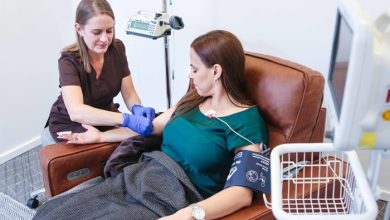
For millions of people worldwide, glasses and contact lenses are part of daily life. They’re essential tools to correct refractive vision problems like myopia (nearsightedness), hyperopia (farsightedness), and astigmatism. However, the desire for clear vision without the need for corrective eyewear is a common aspiration, leading many to consider LASIK in Houston. This popular procedure offers a life-changing solution to vision correction. But how do you know if it’s the right choice for you? And what should you expect from the surgery?
What is LASIK Surgery?
LASIK is a type of refractive surgery designed to correct vision problems by reshaping the cornea, the transparent front part of the eye, using a laser. This alteration allows light to be properly focused on the retina, leading to clearer vision. The procedure is quick, typically taking only 15 to 30 minutes per eye, and it often results in immediate improvement. Most patients experience minimal discomfort during the procedure and can return to normal activities within a day or two.
The procedure is effective for a range of vision issues:
- Myopia (nearsightedness): Difficulty seeing distant objects clearly.
- Hyperopia (farsightedness): Trouble focusing on nearby objects.
- Astigmatism: Blurred vision caused by an irregularly shaped cornea.
Why Consider LASIK?
Freedom from Glasses and Contacts
One of the main reasons individuals consider LASIK surgery is the promise of freedom from glasses or contact lenses. This newfound independence can drastically change how you experience daily life. Simple activities like swimming, exercising, or even waking up in the morning can become more convenient when you’re no longer dependent on eyewear.
A Safe and Effective Procedure
LASIK surgery is generally safe and effective for most candidates. The procedure is most successful for individuals who are over 18 years old, have had stable vision for at least one year, and have healthy eyes. A thorough consultation with a qualified ophthalmologist is essential to determine if LASIK is suitable for you. Till then, you will have to put up with your blue light blocking glasses.
Safety is a top priority, and modern LASIK procedures have become even more precise with the advent of advanced technology.
Medical Advancements Minimize Risks
As technology advances, LASIK surgery continues to evolve, becoming safer and more precise. New laser technologies, such as femtosecond lasers, have reduced the risk of complications such as regression (when vision worsens after surgery). These innovations ensure that patients are more likely to achieve the clear, stable vision they desire.
Who Should Consider LASIK?
While LASIK can provide life-changing results for many, it’s essential to assess whether it’s the right option for you. Ideal candidates typically:
- Are over 18 years old.
- Have had stable vision for at least one year.
- Are in good overall health and have healthy eyes.
- Have a refractive error that falls within the treatable range.
It’s also important to note that LASIK isn’t recommended for people with certain conditions, such as severe dry eye, corneal irregularities, or diseases like glaucoma or cataracts.
Consulting with a Qualified Surgeon
Choosing a reputable surgeon is crucial for a successful LASIK experience. Surgeons should be fully qualified, experienced, and transparent about their patient outcomes.
It’s also essential to inquire about the technology they use during surgery, as the latest advancements in LASIK equipment can greatly influence the safety and success of the procedure.
The Risks Involved with LASIK Surgery
Though LASIK has a high success rate, as with any medical procedure, there are risks involved. Complications can include:
- Dry eyes: Temporary dryness and discomfort are common after surgery.
- Halos or glare: Some patients may experience visual disturbances like halos around lights, particularly at night.
- Over or undercorrection: In some cases, the surgery may not fully correct the refractive error, or it may over-correct it, leading to the need for additional procedures.
Though these complications are rare, it’s essential to discuss potential risks with your surgeon to make an informed decision.
Post-Surgery Care
After LASIK surgery, patients are usually able to return to normal activities within a day or two, but it’s essential to follow post-surgery care instructions to ensure the best possible outcome. This includes using prescribed eye drops to prevent infection, avoiding rubbing the eyes, and attending follow-up appointments to monitor the healing process.
LASIK Surgery Success Stories
Many high-profile individuals have undergone LASIK and found success. Celebrities like Jennifer Aniston, LeBron James, and Tiger Woods have all chosen LASIK to correct their vision, leading to improved daily life and increased comfort.
Potential for Regret
Despite the overwhelming success rate of LASIK, some people hesitate to undergo the procedure. However, many patients regret waiting too long to have the surgery, realizing how much easier life could have been without the hassle of glasses or contacts.
Conclusion: Is LASIK Right for You?
LASIK surgery can offer clear, freedom-filled vision for those who are suitable candidates. The advancements in LASIK technology make it a safer, more precise option than ever before, while the ability to say goodbye to glasses and contact lenses is an enticing prospect for many.
However, like any medical procedure, LASIK carries some risks, and it’s essential to consider these alongside the benefits. Consulting with a qualified, experienced surgeon can help you make the best decision for your eye health and vision needs.
If you’re considering LASIK, take the time to gather information, weigh the pros and cons, and discuss your options with a trusted ophthalmologist to determine if LASIK is the right choice for you.




